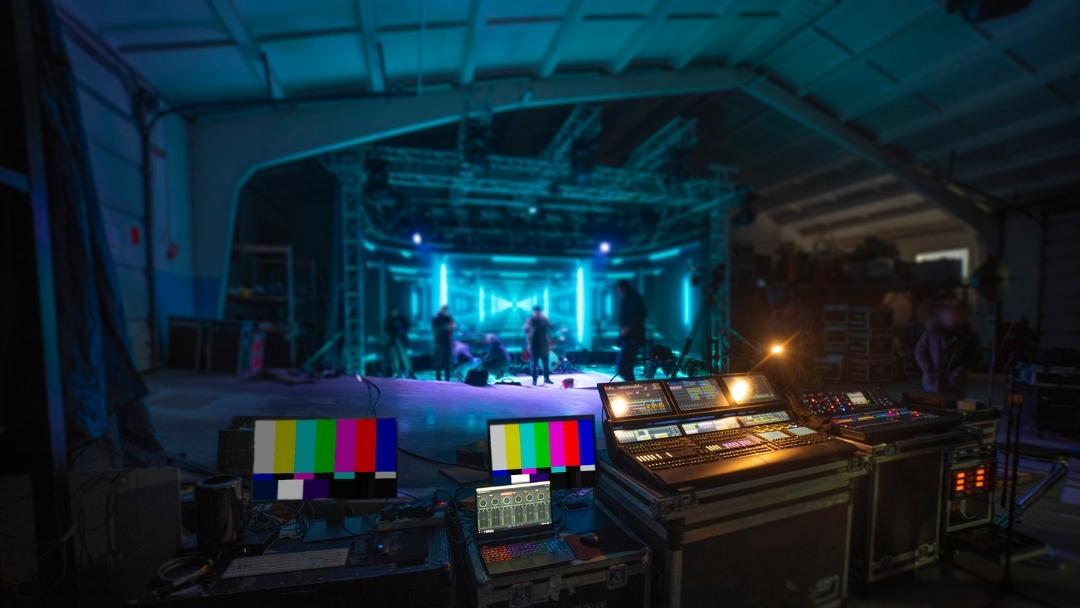Worin besteht die virtuelle Event-Produktion und warum brauchen Sie sie? Die Alternative zu persönlichen Veranstaltungen und Seminaren sind virtuelle Veranstaltungen: Webinare, virtuelle Messen, etc. Wir von expertshare geben Ihnen einen vollständigen Leitfaden an die Hand, damit Sie Ihre Veranstaltungen wie ein Profi produzieren und durchführen können und Ihr Unternehmen weiterhin durch das Internet in Richtung Wachstum segelt. Beginnen Sie jetzt mit der Erstellung virtueller Veranstaltungen!
In den letzten 2 Jahren war es nicht wirklich möglich, viele Live-Networking-Events mit spontanem Gedankenaustausch von Angesicht zu Angesicht zu genießen. Es ist jedoch immer noch möglich, Ihr Unternehmen am Laufen zu halten, den Kontakt zu Ihren Kunden aufrechtzuerhalten und, warum nicht, vielleicht sogar neue Leads und potenzielle Kunden zu gewinnen, trotz der COVID-19-Krise.
Der Wert des persönlichen Austauschs wird nie verschwinden, aber es gibt Zeiten, in denen der virtuelle Weg ein notwendiger Bestandteil Ihres Veranstaltungsprogramms ist. Angesichts der durch die Coronavirus-Pandemie verursachten sozialen Distanzierung könnte die virtuelle Event-Produktion wie Webinare, virtuelle Messen usw. die ideale Alternative sein, um Ihr Unternehmen zum Blühen zu bringen.
Warum die Organisation eines virtuellen Events eine Chance ist, Ihr Unternehmen wachsen zu lassen

Die Organisation einer virtuellen Veranstaltung ist eine großartige Gelegenheit, die geografische Reichweite Ihres Unternehmensmarketings zu erweitern. Außerdem können Sie mit Ihren Kunden in Kontakt treten und neue Interessenten gewinnen, die sich für Ihr Angebot interessieren könnten.
Die Organisation einer virtuellen Veranstaltung erfordert die gleiche Sorgfalt und Aufmerksamkeit für Details wie eine persönliche Veranstaltung. Bei beiden Veranstaltungen müssen Sie alles tun, um die Veranstaltung effektiv zu bewerben, Ihre Teilnehmer zu engagieren, unvergessliche Momente für die Teilnehmer zu schaffen und den Erfolg der Veranstaltung zu demonstrieren.
Wenn Sie virtuelle Veranstaltungen nicht als kleine, einmalige Präsentationen betrachten, sondern als wertschöpfende, auf Engagement ausgerichtete Erlebnisse, können Sie eine Veranstaltung schaffen, die eine Wirkung auf die Menschen hat und über den Computerbildschirm hinausgeht. Was hält Sie also davon ab, Ihre eigenen virtuellen Veranstaltungen zu schaffen?
Wir möchten einen Beitrag zum digitalen und innovativen Wachstum Ihres Unternehmens leisten und stellen Ihnen daher diesen praktischen Leitfaden vor, der Ihnen den Einstieg in die virtuelle Event-Produktion erleichtert. Lassen Sie uns mit den Grundlagen beginnen:
Was ist eine virtuelle Veranstaltung?
Wahrscheinlich haben Sie schon einmal an einem Online-Webinar teilgenommen, sich einen On-Demand-Workout-Kurs angesehen, an einem Meeting mit einem Videokonferenz-Tool teilgenommen oder sogar an einer Konferenz teilgenommen, die Sie bequem von zu Hause oder von Ihrem Schreibtisch aus verfolgen konnten. Dies sind alles Beispiele für virtuelle Veranstaltungen. Eine virtuelle Veranstaltung ist eine Veranstaltung, bei der die Teilnehmer die Veranstaltung und ihre Inhalte online erleben, anstatt sich persönlich zu treffen.
Die wichtigsten Arten von virtuellen Veranstaltungen
Virtuelle Veranstaltungen sind kein Ersatz für persönliche Veranstaltungen, sondern eine neue Form, mit der Sie Ihr gesamtes Programm aufwerten können. Hier sind die 4 wichtigsten Arten von virtuellen Veranstaltungen:
1. Virtuelle Konferenzen
Wie persönliche Konferenzen enthalten auch virtuelle Konferenzen Keynotes, Breakout-Sessions und mehr. Virtuelle Konferenzen umfassen Inhalte, die mehrere Sitzungen umfassen, sowie Tools zur Einbindung der Community. Virtuelle Konferenzen sind zwar in Bezug auf die Rekrutierung von Teilnehmern und das Networking nicht so effektiv wie persönliche Veranstaltungen, ermöglichen es den Teilnehmern jedoch, Keynotes in Echtzeit zu sehen, ihre eigene Agenda aus relevanten Inhalten zusammenzustellen und mit anderen Teilnehmern zu interagieren.
2. Webinare
Webinare dauern in der Regel zwischen 45 und 90 Minuten und ermöglichen es Teilnehmern aus der ganzen Welt, sich einzuschalten und zuzuhören, während ein oder mehrere Redner den Inhalt virtuell präsentieren. Unternehmen können für die Teilnahme an Webinaren Gebühren erheben, indem sie kostenpflichtige Online-Dienste nutzen, oder sie können kostenlos angeboten werden. Bei Webinaren werden in der Regel Videokonferenz-Tools verwendet, die Fragen und Antworten sowie die Möglichkeit der Präsentation von Live- oder aufgezeichneten Videos bieten und nach Abschluss auf Abruf angeboten werden.
3. Interne hybride Veranstaltungen
Hierbei handelt es sich um Beiräte oder Rathäuser, Verkaufsstarts, unternehmensweite Veranstaltungen, Schulungen, Abteilungsbesprechungen und mehr. In Unternehmen, die sich über mehrere Länder oder sogar Kontinente erstrecken, werden interne hybride Veranstaltungen genutzt, um eine Botschaft an das gesamte Unternehmen weiterzugeben, wenn die Mitarbeiter nicht alle am selben Ort versammelt sind. Es wäre zwar schön, alle Mitarbeiter zum Hauptsitz Ihres Unternehmens zu fliegen, aber das wäre unglaublich teuer und die notwendige Planung wäre zeitaufwändig.
4. Externe hybride Veranstaltungen
Diese Veranstaltungen werden für Personen außerhalb des Unternehmens durchgeführt. Dabei kann es sich um Benutzerkonferenzen oder Branchenkonferenzen handeln. Sie erfordern ein höheres Niveau der Videoproduktion, damit die virtuellen Teilnehmer eine ähnliche Qualität wie die persönlichen Teilnehmer erhalten. Diese Veranstaltungen ermöglichen es auch Teilnehmern, die nicht zu der Veranstaltung reisen können, teilzunehmen und zu lernen.
Warum eine virtuelle Veranstaltung organisieren?
Virtuelle Veranstaltungen werden aus denselben Gründen durchgeführt wie persönliche Veranstaltungen: Sie sollen die Botschaft Ihres Unternehmens vermitteln, um Leads und Umsätze zu steigern, die Akzeptanz zu fördern und lebenslange Loyalität zu erzeugen. Seit Jahren haben Meeting- und Eventplaner die Wahl zwischen persönlichen, virtuellen und hybriden Veranstaltungen und sind zu dem Schluss gekommen, dass jede Art von Veranstaltung ihre eigenen Vor- und Nachteile hat.
Hier sind einige Gründe, die für eine virtuelle Veranstaltung sprechen
- Zugänglichkeit: Im Gegensatz zu persönlichen Veranstaltungen können Sie bei virtuellen Optionen einen Raum für Teilnehmer anpassen, die nicht persönlich teilnehmen können.
- Budget: Wenn Ihr Unternehmen Kosten einsparen und kleinere Veranstaltungen durchführen muss, können Sie mit Webinaren Geld sparen, das Sie dann in eine größere jährliche Veranstaltung investieren können, die eine große Zahl potenzieller Kunden anzieht. Es ist auch hilfreich, eine virtuelle oder hybride Option anzubieten, wenn das Reisebudget der Teilnehmer ein Problem darstellt.
- Keine andere Möglichkeit: Aufgrund von extremen Wetterbedingungen, Reiseverboten oder höherer Gewalt sind Sie gezwungen, Ihre persönliche Veranstaltung in eine virtuelle Veranstaltung umzuwandeln oder sie ganz abzusagen.
Die Grundlagen der Veranstaltungsplanung
Bei der Planung von Veranstaltungen geht es um das Wesentliche: Marketing, Werbung für Inhalte und Kundenbindung. Dies sind, kurz gesagt, die Grundlagen und grundlegenden Prinzipien:
- Virtuelle Veranstaltungen brauchen ebenso wie persönliche Veranstaltungen ein gutes Marketing. Ohne gezielte und effektive Werbung leidet die Teilnehmerzahl.
- Inhalt ist König. In einer virtuellen Umgebung ist Ihr Inhalt Ihr Event. Aussagekräftige Keynotes und ansprechende Sitzungen, die auf die Teilnehmer zugeschnitten sind, sind entscheidend.
- Allein sein muss nicht einsam bedeuten. Binden Sie virtuelle Teilnehmer ein. Bieten Sie Optionen an, die für jeden Teilnehmertyp relevant sind, und verwenden Sie Online-Veranstaltungsführer für virtuelle Veranstaltungen.
- Daten sind der einzige Weg, den Erfolg einer Veranstaltung nachzuweisen. Die Messung des Engagements und die Erfassung von Teilnehmerdaten sind die einzige Möglichkeit, den ROI (Return on Investment) einer Veranstaltung nachzuweisen und die Buyer’s Journey zu aktivieren.
Elemente einer virtuellen Veranstaltung
Ein virtuelles Event basiert auf Inhalten, der Beteiligung der Teilnehmer und Daten. Obwohl virtuelle Veranstaltungen keine Verpflegung benötigen, bestehen sie aus vielen der gleichen Elemente wie jede andere Art von Veranstaltung. Die Qualität der Videoproduktion und die Konnektivität sind ebenso wichtig wie die Website, auf der die Agenda und die Inhalte bereitgestellt werden.
Dies sind die Elemente, die eine virtuelle Veranstaltung ausmachen:
- Website der Veranstaltung
- Registrierung für die Veranstaltung
- Inhalt der Live-Präsentation
- Live-Audio / Einweg-Video (Live-Streaming)
- Fragen und Antworten (Q&A)
- Live-Teilnehmerumfragen
- Notizen/Favoriten-Folien
- Aufgezeichnete Inhalte
- Interaktive Videokonferenzen
- Feedback-Umfragen
Technologieplattformen für virtuelle Veranstaltungen
Virtuelle Veranstaltungen basieren auf Technologie. Ohne den Einsatz von Computern und mobilen Geräten wäre die Teilnahme an ihnen nicht möglich. Aber die Technologie für virtuelle Veranstaltungen erfordert mehr als nur Videokonferenz-Tools. Genau wie bei einer persönlichen Veranstaltung profitieren auch virtuelle Veranstaltungen von einer umfassenden Plattform für Veranstaltungstechnik, die Sie bei der Werbung, Durchführung und Verwaltung Ihrer Veranstaltung unterstützt.
Hier sind die wichtigsten Elemente der Veranstaltungstechnik, die Sie bei der Vorbereitung der virtuelle Event-Produktion einsetzen sollten.
Veranstaltungswebsite: Ihre Veranstaltungswebsite wird für die Werbung genutzt. Sie dient demselben Zweck, unabhängig davon, ob es sich um eine virtuelle oder eine persönliche Veranstaltung handelt. Ihre Veranstaltungswebsite ist Ihr wichtigstes Werbeinstrument, um potenzielle Teilnehmer zu interessieren und sie zur Anmeldung für die Veranstaltung zu bewegen. Ihre Veranstaltungswebsite sollte den Wert der virtuellen Veranstaltung vermitteln, den Zeitplan enthalten, die Referenten vorstellen, häufig gestellte Fragen und Antworten enthalten und potenzielle Teilnehmer auf die Registrierung verweisen.
Anmeldung: Die Registrierung ist Ihr erstes Instrument zur Datenerfassung und für Ihre Veranstaltung von entscheidender Bedeutung. Mit Hilfe von Registrierungstools können sich die Teilnehmer für virtuelle Veranstaltungen anmelden, Präferenzen und persönliche Daten angeben und gegebenenfalls Zahlungen leisten. Ein stabiles Online-Registrierungstool ermöglicht den Teilnehmern eine einfache Registrierung und liefert den Organisatoren und Anbietern die Informationen, die sie für die Planung einer großartigen Veranstaltung und den Nachweis ihres Erfolgs benötigen.
E-Mail: E-Mail-Marketing kann die Nachfrage ankurbeln und die Zahl der Anmeldungen erhöhen, die Teilnehmer vor der Veranstaltung auf dem Laufenden halten und die Teilnehmer vor der virtuellen Veranstaltung durch Feedback-Umfragen einbinden. E-Mail ist der beste Weg, um mit den Teilnehmern in allen Phasen der Veranstaltung zu kommunizieren.
Online-Veranstaltungsführer und mobile Veranstaltungs-App: Die wichtigsten Bestandteile der Technologie für virtuelle Event-Produktion sind der Online-Event-Guide und die mobile Event-App, da sie die Basis für die Teilnehmer während der Produktion der virtuellen Veranstaltung darstellen.
Diese Tools funktionieren auf mobilen Geräten und Webbrowsern und sind die wichtigste Informationsdrehscheibe für die Teilnehmer. Tagesordnungen mit Links zu den Sitzungen machen die Inhalte für die Teilnehmer greifbar. Hier wählen die Teilnehmer aus, welche Sitzungen sie zu ihrer Agenda hinzufügen möchten, und die Planer sammeln Daten über die Beliebtheit der Sitzungen und die Teilnahme der Teilnehmer. Diese Tools verbinden auch die Teilnehmer miteinander und bieten Messaging-Tools, die es den Teilnehmern ermöglichen, sich virtuell zu vernetzen und Kontakte zu pflegen.
Veranstaltungsfeedback: Veranstaltungsfeedback ist für virtuelle Veranstaltungen von entscheidender Bedeutung, wenn die Organisatoren nicht die Möglichkeit haben, die Reaktionen der Teilnehmer anhand ihrer verbalen Äußerungen oder Kommentare vor Ort zu beurteilen. Verwenden Sie Event-Feedback-Tools, um durch Umfragen nach der Veranstaltung Feedback zu sammeln, das den Erfolg der Veranstaltung belegen kann. Darüber hinaus kann das Event-Feedback als Tool genutzt werden, um virtuelle Leads zu qualifizieren und sie in den Vertrieb zu bringen.
Integrationen: Integrationen stellen sicher, dass wichtige Registrierungs- und Teilnehmerdaten zwischen Ihrem Veranstaltungstechnologie-System und Ihrer virtuellen Veranstaltungsplattform ausgetauscht werden. Außerdem können diese Daten mit Ihren Marketingautomatisierungs- und CRM-Systemen ausgetauscht werden. Nutzen Sie Integrationstools, um Ihre Teilnehmerdaten an einem Ort zu speichern, damit Sie potenzielle Kunden schneller erreichen und wichtige Erkenntnisse über die Veranstaltung analysieren können, z. B. die Teilnahme an Sitzungen und das Engagement.
Dies sind die Schlüsselfaktoren für die virtuelle Event-Produktion, damit sie zu einem Erfolg wird

Strategie für virtuelle Veranstaltungen: Legen Sie die Ziele und die Strategie für die virtuelle Event-Produktion fest und stellen Sie sicher, dass die gesamte Organisation auf diese Ziele ausgerichtet ist. Es ist zu überlegen, wie das Publikum angesprochen werden soll, wie man Leads generiert, welche Vorteile erzielt werden sollen, wie das Markenimage aussieht usw. Diese Überlegungen müssen bei der Gestaltung der Inhalte, des Budgets, der zu verwendenden Technologie, des Sponsorings usw. berücksichtigt werden.
Definition des Publikums: Sehen Sie sich Ihre Datenbank an und untersuchen Sie, welche Segmente an den Ansätzen Ihres Unternehmens interessiert wären. Dies ist eine gute Gelegenheit, neue Zielgruppen aus Sektoren, Branchen oder Berufen zu berücksichtigen, die Ihr Unternehmen noch nicht angesprochen hat.
Leitfaden ansprechen: Geben Sie den Teilnehmern einen Leitfaden an die Hand, wie sie virtuell an der Veranstaltung teilnehmen können.
Links: Fügen Sie in die Tagesordnung Links zur Aufzeichnung der Sitzung oder zur Live-Übertragung ein.
Eine attraktive Web- oder Landing Page ist unerlässlich. Einer der Schlüssel, um Teilnehmer zu überzeugen, ist die Erstellung einer attraktiven Webseite oder Landing Page.
Suchen Sie nach Partnern, um die Veranstaltung zu bewerben
Partner, Redner und andere Botschafter der Veranstaltung können helfen, die Botschaft zu verbreiten. Erstellen Sie einfache und anpassbare Inhalte, damit die Botschafter die Veranstaltung in den sozialen Medien und anderen Medien bewerben können.
Geben Sie eine Vorschau auf den Inhalt
Eine Vorschau auf den Inhalt zu geben, ist eine gute Sache. Wenn Sie in den sozialen Medien und anderen Medien kurze Videos posten, die zur Teilnahme anregen, und den Inhalt vorwegnehmen, erhöht sich die Zahl der Anmeldungen.
Liefern Sie den Beweis für den Erfolg Ihrer virtuellen Veranstaltung
Der Erfolg einer virtuellen Veranstaltung hängt davon ab, dass die Ziele der Veranstaltung mit den Unternehmenszielen in Einklang gebracht werden, dass vor der Veranstaltung wichtige Leistungsindikatoren festgelegt werden, um den Erfolg der Veranstaltung zu definieren, und dass nach der Veranstaltung die Veranstaltungsdaten analysiert und die Erkenntnisse ausgewertet werden. Die Prüfung des Return on Investment (ROI) der Veranstaltung erfordert eine Kosten-Nutzen-Analyse. Die Kosten werden als direkte Kosten, indirekte Ausgaben und Opportunitätskosten ausgedrückt. Der Nutzen bezieht sich auf den direkten Umsatz, den zugewiesenen Umsatz, die zugewiesene Vertriebspipeline, den Markenwert und den Wissensaustausch.
Durch die Verwendung von Daten, die während virtueller Veranstaltungen gesammelt werden, um Kosten und Nutzen abzuwägen, können Sie den Erfolg Ihrer Veranstaltung nachweisen. Legen Sie Ihre Erfolgskennzahlen vor Beginn der Veranstaltung fest. Nehmen Sie sich nach der Veranstaltung die Zeit, um zu verstehen, ob die virtuelle Event-Produktion auf der Grundlage Ihrer Kennzahlen erfolgreich war, und analysieren Sie, wie Sie sie in Zukunft verbessern können.
Jetzt haben Sie die Grundlagen, um mit der Organisation Ihrer virtuellen Veranstaltungen zu beginnen und Ihrem Unternehmen den lang ersehnten Erfolg zu verschaffen, indem Sie technologische Tools einsetzen. Trauen Sie sich und gehen Sie an Ihre Grenzen!
Wenn Sie sich über weitere Themen informieren möchten, die Ihnen helfen, Ihr Unternehmen im digitalen Zeitalter zu positionieren, und wenn Sie die beste technische und kaufmännische Unterstützung erhalten möchten, um jede Krise zu meistern, wenden Sie sich an expertshare, die Experten für die virtuelle Event-Produktion.






